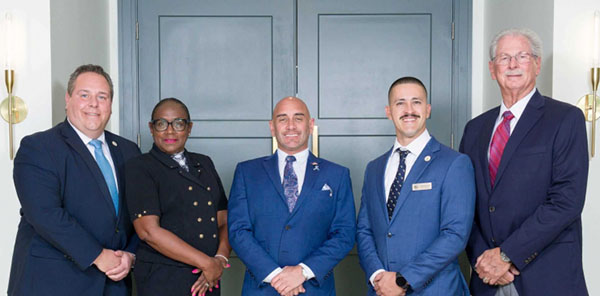The City of Westlake’s 2025 budget and millage rate are official after a Tuesday, Sept. 11 final budget hearing. Both passed 5-0.
While the overall budget will increase $2,364,000 over 2024, the community’s fast-growing residential homes sales, a steady increase in commercial real estate investment and a decision to trim $300,000 from staff-suggested reserves allowed a reduction in the tax rate from the planned 4.95 mills to 4.7 mills.
That means the average Westlake resident owning a $600,000 home will pay some $180 less in municipal taxes than last year, when the millage rate also was 4.95, city officials have said.
The vote marks the third consecutive year that Westlake has cut the property tax rate, even as overall budgets have increased. The budget for the 2025 fiscal year that begins Oct. 1 is $10,695,500 — a 19.8 percent increase over 2024.
Vice Mayor Greg Langowski, who suggested holding less money in reserves, said this week, “It’s not a huge cut. We’re still putting $1 million in reserves. But any little bit that we can put back in the pockets of residents is a good thing.”
Langowski noted that Mayor JohnPaul O’Connor was a big supporter of the tax rate reduction, and that city staff was comfortable that the change would not negatively impact the budget.
“I always meet with city staff and the city manager [Kenneth Cassel],” Langowski said. “I trust our staff. I believe we’re in good shape.”
Even with the cut, Westlake will be adding $1 million to the $4 million already in municipal reserves. The reserve funds are for an emergency, such as a hurricane, and for use when state, federal or other grants require up-front matching dollars.
Langowski said he hopes state and federal grants — matching or otherwise — can be found to help defray the cost of a 50-acre regional park now under construction on the west side of Seminole Pratt Whitney Road, just south of Seminole Ridge High School. The park is a joint project between the City of Westlake and the Seminole Improvement District (SID).
Langowski noted that the city has contracted with an as-needed grant writer, and that officials will be urging the area’s state legislators to help when the new session kicks off in March.
“A lot of municipalities do very well getting help with parks,” he said. “Any help we could get would be great.”
Unfortunately for residents, the $180 reduction in municipal taxes will be more than offset by the assessment agreement created with SID when the city came into being in 2016. SID supplies most of the community’s infrastructure, including roads and drainage.
The average Westlake homeowner living on a quarter-acre lot will see a 30 to 37 percent increase — $262 to $294 — in their SID assessment, according to data supplied by the district. That will increase the average assessment from $829 to $1,107.
The SID budget received final approval 3-0 at its board’s Aug. 19 meeting.
While Cassel also manages SID, the Westlake City Council has no say in the district’s budget.
SID’s 2025 budget will increase from $6 million to $7 million, that’s $2.7 million less than anticipated in 2016, according to a letter sent to property owners and posted at www.seminoleimprovementdistrict.com.
The letter explained that the original operations and maintenance methodology of 2016 that was adopted by SID projected build-out in 2036, with an operations and maintenance budget of approximately $21.7 million based on 4,546 single-family residences and 2.2 million square feet of non-residential buildings.
The assessment rates in the projected 2036 buildout were between $2,593 and $3,807, depending on the single-family property size, the letter continued. However, Westlake remains the fastest-growing municipality in Palm Beach County and one of the fastest growing in Florida. Thus, residential buildout is expected to occur much sooner than originally projected — perhaps as early as 2027.
Currently, there are some 3,825 single-family parcels platted (84.1 percent), while roads, pathways, landscaping and lakes are approximately 90 percent constructed.








